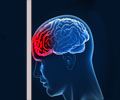Highlights
- Chronic traumatic encephalopathy (CTE) is a neurodegenerative brain disease linked to repeated trauma to head (concussion).
- At present, diagnosis of CTE is only confirmed after death by brain tissue examination
- New imaging agent shows the distinctive pattern of ‘tau’ protein deposition in CTE on a positron emission tomography (PET) scan of the brain.
- The new agent thus makes it possible to diagnose CTE in the living person [brain].
Using The Novel Imaging Agent
Researchers at Mount Sinai used a novel experimental imaging agent called [18 F]-T807 (or Avid 1451) with PET scan to visualize the brain of a living, 39-year-old retired National Football League (NFL) player who had previously suffered 22 concussion injuries, and displayed clinical features consistent with chronic traumatic encephalopathy (CTE), a neurodegenerative brain disease that has been linked to suffering repetitive trauma or blows to the head in athletes and soldiers.Distinctive Pattern of Tau Protein Accumulation In CTE
CTE shows a distinctive pattern of tau protein accumulation that was described in 2015 by an expert panel commissioned by the National Institute of Neurological Disorders and Stroke (NINDS). The diagnostic criteria of CTE were arrived by the panel, based on examination of brain tissue samples following death.
The surface of the brain is highly wrinkled. The ‘tau’ protein accumulation in CTE follows the highly folded surface of the brain and is especially highest at the deepest points in the wrinkles and folds. The NINDS panel described this distinctive pattern as ‘pathognomonic’ of CTE. The term ‘pathognomonic’ indicates that if this pattern of tau protein accumulation is seen in the brain, the diagnosis can only be CTE. There should be no confusion with other tau diseases such as Alzheimer’s.
Potential Applications For The New Tracer
- If further tests prove the efficacy of T-807 in outlining the
distinctive pattern of tau protein deposition in CTE, it could well become a
diagnostic marker for the ante-mortem diagnosis of CTE.
- PET
scans using the new tracer may help to study the pathology and disease course
of CTE.
“This research is in its infancy,” says Dara L. Dickstein, PhD, Assistant Professor of Neuroscience, and Geriatrics and Palliative Medicine at the Icahn School of Medicine at Mount Sinai and first author of the study. “Whether or not the pathology can be reversed or halted is something we have yet to determine and these new tauopathy PET scans may be able to help in this endeavor.”
“The findings demonstrate that we may now have the first biomarker for the detection of CTE through tau imaging,” says Howard Fillit, MD, Alzheimer’s Drug Discovery Foundation’s (ADDF) Founding Executive Director and Chief Science Officer. “This may prove significant as an early diagnostic tool for those who suffer repeated traumatic brain injuries. It may also help us better understand the similarities in disease processes between CTE, Alzheimer’s and other neurodegenerative diseases, and determine whether repeated head injuries may lead to the onset of Alzheimer’s.”
About Chronic Traumatic Encephalopathy
Chronic traumatic encephalopathy is a progressive degenerative disease of the brain due to repeated trauma to the brain. It typically occurs in sportspersons and soldiers. Repeated trauma causes accumulation of an abnormal type of a protein called ‘tau’. Build-up of the tau protein causes the death of nerve cells.
Features of CTE include loss of memory and confusion, impaired reasoning and judgment, paranoia, impulsive behavior, mood swings, violence, depression, and ultimately leading to progressive dementia. Interestingly, symptoms may appear months, years, or even decades after occurrence of trauma. At present, CTE can be definitively diagnosed only after death by examination of brain tissue.
CTE can be prevented by avoiding brain trauma and preventing additional injury after a concussion. In the sports field, incidence of concussion may be reduced by wearing protective helmets, which however don’t totally eliminate the risk. Coaches and players should be aware of signs and symptoms of concussion.
It has also been recommended that motorcyclists and other two wheeler riders wear helmets to protect against head injury and consequent brain damage.
References
- Chronic Traumatic Encephalopathy - (http://www.mayoclinic.org/diseases-conditions/chronic-traumatic-encephalopathy/basics/prevention/con-20113581)
- What is CTE? - (http://concussionfoundation.org/learning-center/what-is-cte)
















